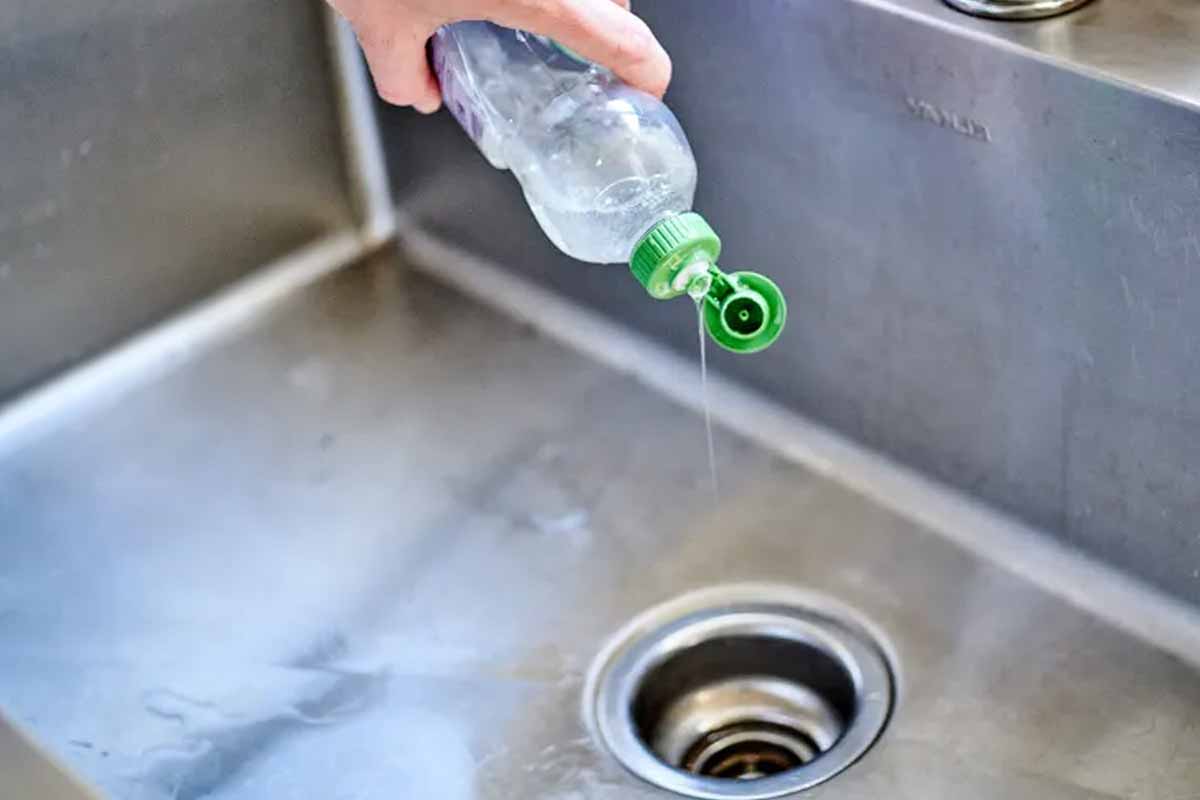October’s fierce rain puts outside drains to the test, right when homes need them most. Water can pool fast, then creep toward patios, driveways, and foundations. Panic rises, yet the answer is simple and cheap. A familiar bottle does the heavy lifting without harsh fumes. Reach for vinegar, pair it with cupboard staples, and clear buildup before storms return. The method works with care, saves money, and slots easily into a weekend routine.
Why rainstorms quickly overwhelm outdoor drains in autumn
Heavy showers carry grit, silt, and shredded leaves into gullies, where tight bends trap debris. As the flow surges, solids stick to greasy films and slow the water. Backups follow, so puddles spread across hard surfaces and push moisture against the home’s base.
Outside gullies also route domestic waste, according to Wolseley, which means everyday residues reach the same pipes. Coffee grounds and cooking grease behave like glue around corners. While the rain races, that sticky layer catches everything else and narrows the opening.
Grates help because they intercept leaves before they clump in the trap. Mesh filters stop twigs and grit without blocking flow. Indoors, simple sink strainers catch food and hair. Add a quick rinse with vinegar after bad weather, and the film that feeds clogs breaks down.
How vinegar and baking soda clear stubborn clogs
Plumbcare outlines a reliable mix that fizzes through sludge. Combine two parts baking soda with one part salt, then tip the dry blend into the drain. Warm four parts vinegar, pour it over the powder, and let the reaction expand through the trap and branch.
The bubbling scours residue along bends while the salt adds gentle abrasion. Give the mix fifteen minutes to work in calm pipes. Because the foam needs space, keep the flow off during that window, so gas pushes past buildup rather than dispersing early.
Finish with a hot-water flush to melt fatty films and carry loosened grit away. Use a full kettle for short runs, or several for longer lines. Repeat only if flow still lags, since repeated bursts beat one long soak. The process is cheap, quick, and low odour.
Prevent blockages with simple habits and cheap hardware
Prevention begins with control. Keep grease out of any line that links indoor sinks to outside drains. Cool fats in a jar instead, because liquid oil hardens in pipes. Coffee grounds belong in compost, not traps, since they clump and stick to film where flow slows.
Hardware does the rest. Fit grates over external gullies to screen leaves before storms. Choose a mesh that catches small debris without starving the opening. Indoors, place basket strainers in plugholes, then empty them into the bin. Hair and food scraps never reach the pipes.
For maintenance, routine vinegar rinses help disrupt biofilm that grabs grit. If backups persist, Wolseley notes small amounts of chemical drain cleaner may extend clarity. Use sparingly and separately from any home mix. Space treatments, because overlapping products can react and increase risk.
Safety and timing when using vinegar in outdoor drains
Autumn timing matters because rainfall arrives in waves. Treat lines before a storm, after wind knocks down leaves, or on a clear weekend. That cadence keeps traps open when runoff peaks. Because habits beat emergencies, a monthly slot on the calendar prevents surprise puddles.
For safety, never mix home remedies with chemical cleaners. If one method fails, flush thoroughly with hot water. Then, wait before trying another. Gloves protect skin, while goggles stop splashes. Warm liquids work better, although boiling water can soften some plastics, so pour steadily.
When using vinegar with baking soda, keep pets and children away from the area. Ventilate if working near basement entries. If the drain links to a sump or pump, isolate power before lifting grates. Replace covers securely, so leaves cannot tumble back during the next squall.
When professional help or deeper checks make more sense
Some signs suggest trouble beyond routine care. Standing water that returns within days signals a hidden snag. Repeated backups after storms, even with grates and strainers, point to a partial collapse, root intrusion, or a misaligned junction that needs proper tools.
Start with simple checks. Lift the grate and remove packed leaves from the gully. Feel for silt ridges near bends, then scoop them out. Indoors, clear strainers and run a short hot flush. If flow still crawls, the issue may sit farther along than a household reach.
In those cases, treat a vinegar flush as a stop-gap, not a cure. A professional can camera-survey lines, jet silt from long runs, and reseat loose joints. Timely repair protects paving, lawns, and foundations. The cost often beats the damage from a flooded patio or garage.
A quick autumn habit that protects your home outside
Storm season rewards small routines. Keep leaves out, install simple screens, and choose a gentle reaction over harsh fumes. Pair kitchen staples with patient timing, then flush with hot water. Use vinegar wisely, watch how fast the water clears, and call help when symptoms persist. Protection grows from habits.
